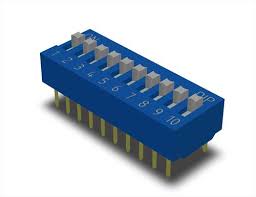When designing Printed Circuit Boards (PCBs), the time to market is crucial – a fact well known to anyone managing these projects. However, what is less obvious is the foundation in which the entire design process rests upon – component libraries. It may sound mundane, but the reality is that poor library management is a leading cause of blown budgets and missed deadlines. Let’s explore why. This insight comes from over 30 years of experience working with dozens of company libraries.
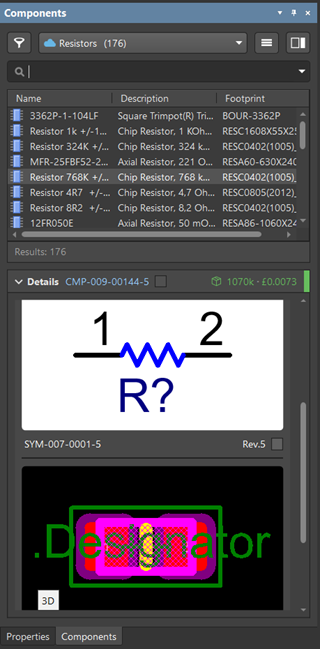
An example of resistors listed in a component library
Understanding How a Component is Used in a Design
Let’s start with a single component. Whether it is a 2-pin resistor or a 2,000-pin processor, in the PCB design process the circuit is drawn twice – once in a conceptual fashion known as a schematic, and the other in a physical fashion known as a layout. When a component is to be used in a design, the component must be defined by two graphical representations (symbol and footprint) in addition to textual information to identify the component in a bill of materials.
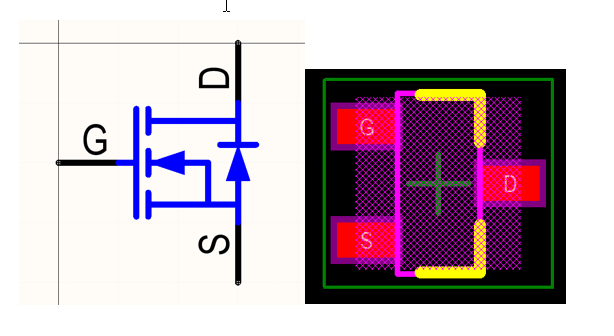
An example of a symbol and footprint for a transistor component
Understanding Your Designers
It may surprise you to learn that your degreed circuit designer was never formally trained in the art of PCB design. Undergraduate engineering programs typically focus on learning to design an abstract representation of the circuit, known as schematic capture. Any actual circuit they physically assembled or touched in the classroom labs was limited to protoboards or off-the-shelf completed circuit boards like Arduino, Beaglebone, or Raspberry Pi, to name a few.
Most engineers hired out of college simply forced their way through the tools necessary for the physical layout of the board. They rely on the grit that got them through their academic curriculum to complete the design layout. A new designer must overcome two major obstacles. The first is the learning curve of the tool; these are complex tools that require familiarity with PCB-design terminology to operate in the tool (i.e., polygons, vias, layer stacking, rat’s nests, etc.). The second is designing a board for manufacturing (known as DFM – Design For Manufacturing).
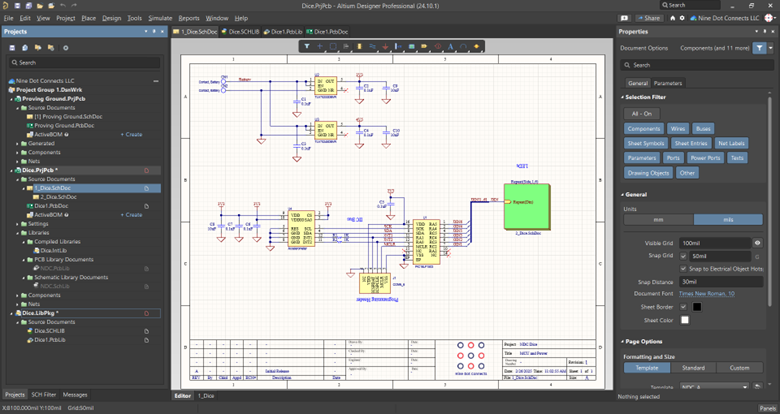
An example of a schematic workspace in Altium Designer, one of the commonly used PCB Design software
Additionally, designers aren’t taught how to maintain a component library, let alone draw a component with its graphical and textural information consistently. Compounding the issue, library management is not trivial and – to be honest – very tedious. Not to mention the other time pressures to create and draw the design itself.
From the Designer’s Perspective.
Let’s now put ourselves in the shoes of an average designer to see how this plays out. We are going to establish a number of assumptions so that we can isolate the underlying issue:
- We are familiar with the tools being used for circuit design.
- We are competent and capable of designing circuits.
- We are capable of getting a design into manufacturing. We have interfaced with fabricators and assemblers and know how to engage them and their expectations.
- We have a specification to follow.
The first step in circuit design is to search for the component(s) that will play a key role in this circuit. Our preference is to use components that have we have already used in prior projects.
In a well-maintained component library, we should be able to quickly find and place such components onto our schematic design. However, more often than not, we will also need additional components that we have not used in prior designs. We will need to spend time researching components and pouring through their datasheets – some of which rival the size of textbooks. With supply chain issues, there is also an additional task of determining availability.
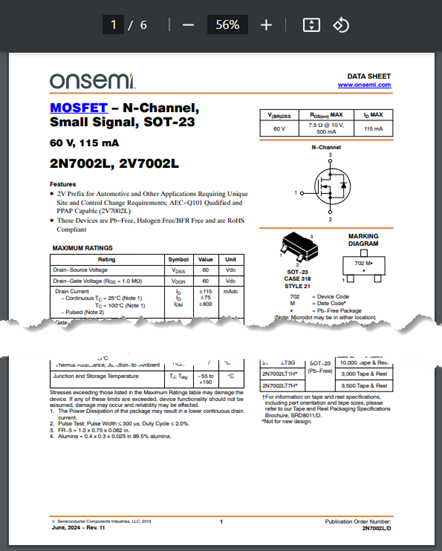
A common example of a datasheet. The above is the manufacturer datasheet for the previously displayed transistor. Source: https://www.onsemi.com/pdf/datasheet/2n7002l-d.pdf
In addition to researching the component we wish to use, we have the task of defining this component in our software so that we can add it to both our library and our design.
What do we have to define? There are four aspects:
Firstly, we need to textually define the component. This is for two reasons:
- Searchability in the component library
- Ability to add the information to a Bill of Materials
Textual information includes the manufacturer’s name, manufacturer’s part number, a description, and any key electrical characteristics that define the component. Additional information may be required depending on our company’s workflow.
Secondly, we need to have a graphic of our component for our schematic drawing, known as a symbol. Unfortunately, there is no such thing as a universal graphical component library. It is true that suppliers, OEMs and third parties might provide these symbols; but since every company has its own unique workflow, there is no assurance of accuracy, and every symbol will need to be thoroughly evaluated.
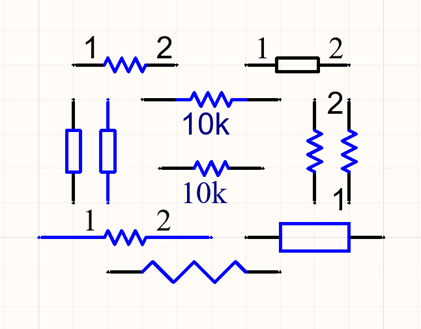
As simple as a resistor may be electrically, its symbolic representation can be expressed in many ways
Thirdly, we need to have a graphic of our component for the physical layout of the circuit, called a footprint. As above, there is no assurance of accuracy and evaluation will be necessary.
Lastly, it is preferable to have a 3D representation of the component so that it may be represented on the board. This allows us to provide a model of the entire circuit for the mechanical engineers to use for fitment into the intended enclosure. This is a critical capability that allows the mechanical and electrical teams to interact without having to redraw the mechanical aspects in two different design tools. Most tools that are used to create printed circuit boards now have the ability to import these 3D models. Note that 3D models may also come from outside sources and will require evaluation.
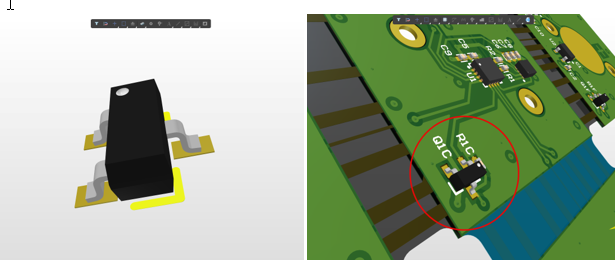
A 3D model of the previously displayed transistor in both the library (left) and on the layout (right)
Starting Off on a Shaky Foundation
If we pause and look at the duties detailed so far, what we are doing is extremely inconvenient. We are taking top engineering talent and having them delay their design efforts to complete administrative work. For many designers this is a tough mental challenge to deal with, as they’re required to switch between a creative and administrative mindset. By way of analogy, if you are creating a PowerPoint presentation and are absorbed in altering margins, playing with fonts, images, animations, etc. (the administrative work), you aren’t focusing your time and effort on the actual content of the presentation (the creative work).
So then, what should we expect from the average designer? Again, let us put ourselves in their shoes. We have a deadline, and this design will likely have well over 100 components, of which 60% will likely be new. We know that management isn’t interested in component making. They want to see the design process. As a result, we take shortcuts that buy us some immediate short-term gains, but introduce major risk towards the end of the design. Let’s explore some of these common shortcuts:
- Blindly copying a component from a prior design.
- Asking a colleague if they have the component stashed in their own personal library.
- Downloading the component, if available, from the OEM, supplier, or third party.
- When all else fails, creating the bare minimum to simply get something into the design.
In this situation, the chances of this component ending up in a company library are slim to none. Even if it is entered into a library, it will not be consistent with other components.
Let’s say that we have completed the schematics with the components we have collected from various sources or created in haste, and we continue along to the circuit layout. This is where the actual copper connectivity is drawn between the components. The component also needs to have a footprint, usually obtained or created alongside the symbol.
The footprint is where the component is going to be soldered onto the board. Unlike the schematic, which is conceptional and dimensionless, the footprint has to be properly dimensioned. As you can image, this is not a place where you want to put blind faith into a footprint that was not vetted. But again, time is of the essence, so these risks are all too often taken.
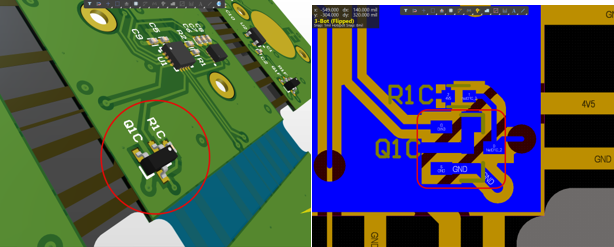
The previously displayed transistor shown soldered onto the board in 3D Mode (left) and 2D Mode (right)
Where Things Start to go Wrong
The design work thus far has been theoretical. Yes, certain checks and rules can help prevent the absurd, but what we have created up to this point is not physical. This is why the design is moving along as scheduled. Layout delays are typically due to various routing issues between components.
Assuming that we were successful in the placement of components and the routing of copper between them, we now move to fabrication (creation of the board) and assembly (placement of components onto the board). The fabricated boards come from the layout files in the design. The turn-around time for bare boards is usually two weeks, depending on complexity.
In the meantime, we need to pull together our bill of materials. This is where the problems begin. Neglecting review of this list prior to and during layout of the board, any major issues that arise may require us to scrap the fabricated bare boards. For instance, lead time issues might prevent us from obtaining components within our window of need. Avoiding this requires that all (100%) of the components are immediately purchasable, or that approved substitutions can be found. With small components this a common practice, however, when it comes to connectors or components with much functionality, like processors, this would require a major step back.
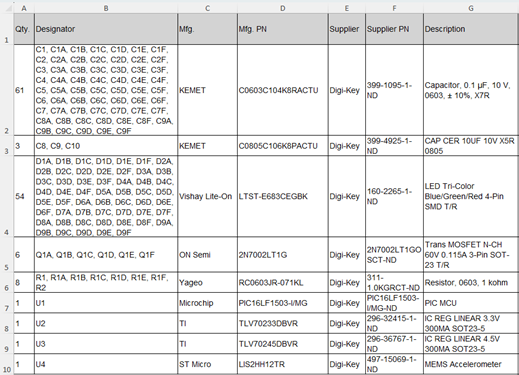
An example list of a Bill of Materials
Even if we do not have issues pulling together our bill of materials and making component purchases, we still have to get through the assembly process. Not only have we invested in board fabrication, but we also purchased components and assembly time. If we did not properly verify the component footprints, they may have incorrect dimensions. As a result, we would have to cease assembly work, review the design and make the necessary changes. Like the bill of materials, the footprints must be 100% correct.
The term “respin” refers to the need to refabricate the board and reassemble it, if the process got that far. The component symbol and/or footprint would need to be corrected and, depending on the component, there may be substantial changes to the layout. The average time it takes to have meetings to discuss the plan of action, to make the changes, and to get it back into manufacturing is at least two weeks.
Keep in mind that as salaried designers, we may feel the workplace stress, but we don’t have the same financial stake in the game as the company does – we’ll still receive our paycheck at the end of the day. Respins ultimately delay the product’s release, potentially causing the company to miss critical market opportunities. Even if the product is eventually successful, there’s a possibility that the profit margin was compromised. Respin costs, the NRE (Non-Reoccurring Engineering) costs, and any additional assembly costs due to work-around complexities caused by design miscalculations all contribute to the loss of the bottom line.
So… Now What?
Now that we have walked through the process and have seen the implications of a poor library, how does a good library prevent this nightmarish scenario?
Let’s consider a library that is well maintained. Firstly, the operative word is CONSISTENCY! A good library does not come about on its own. A company style guide should be adopted and implemented by an individual who owns the library and acts as the component gatekeeper. In an optimal situation, this undertaking should NOT be in the hands of the designers, but rather a technician or another capable, dedicated individual. “Libraries by democracy,” in which all designers have unlimited access to a company library, never work.
Secondly, and just as importantly, a consistent library will provide a clean bill of materials that will literally create itself during the circuit design process. This is possible when each component contains textual information that is consistent throughout the entire library. As a result, the mere placement of these components onto the schematic allows the software to build a bill of materials automatically. In fact, in some companies where the library is well maintained, the design cannot move into the layout stage unless the bill of materials is complete and submitted as part of the design review.
Warning Signs
Take a moment to consider if any of these apply to you and your company:
- You do not know if you have a library, or what the condition of that library is.
- You ask your designers where they are getting their component and they reply, “wherever I can find them.”
- You manually pull together a bill of materials in an Excel spreadsheet.
- You manually pull together a bill of materials in an Excel spreadsheet after sending the layout to fabrication.
- Your purchasing department has a better understanding of the components used in prior designs than the designers.
- The purchasing database has more reliable data about the components than the component library.
If you experience any one of the above issues on a regular basis, it is a red flag that needs to be addressed.
Light at the End of the Tunnel
So, now you find yourself in one or more of these predicaments, or are realizing quickly that these situations are inevitable. If your libraries are in shambles, do not expect your designers to fix them in their free time. Their time is already stretched thin, and even if they did have the time, they do not know how to properly set it up and maintain it. There are simply too many aspects to consider.
At Nine Dot Connects, we have helped dozens of companies get their libraries under control. If you’re tired of missed schedules, blown budgets, and burned-out designers, let us help. We can guide you toward solutions that will streamline your design process and set your team up for long-term success.
Unless otherwise noted, all screenshots taken from Altium Designer v.24.10.1


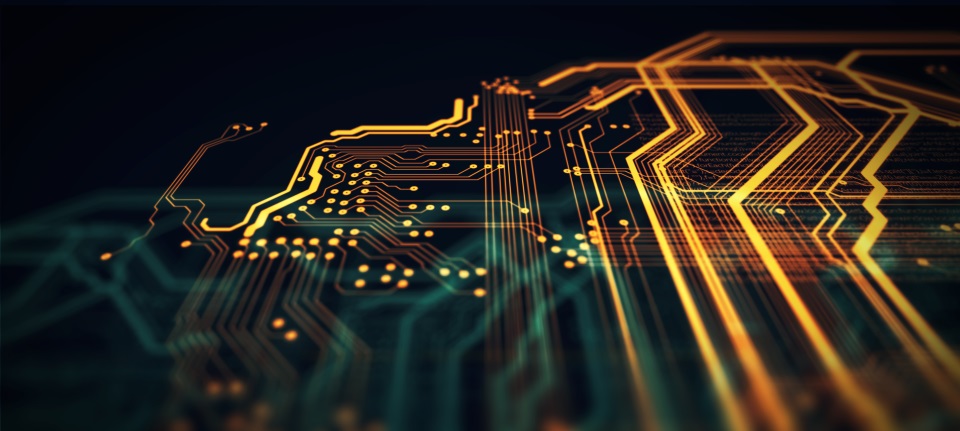
 Recently, Nine Dot Connects, a printed circuit board centric organization, became the national VAR for SOLIDWORKS PCB. With that came the opportunity to explore the mechanical side of design in our effort to better understand and prepare for the future of mechatronic design. Like the old saying, ‘Can’t see the forest for the trees’, this insight into the mechanical domain gave us the opportunity to step back and see the electrical design flow from afar. It became apparent when compared to mechanical libraries, the PCB library structure is complicated by several factors, some by the very nature of electrical design, and others are self-inflicted by the PCB industry.
Recently, Nine Dot Connects, a printed circuit board centric organization, became the national VAR for SOLIDWORKS PCB. With that came the opportunity to explore the mechanical side of design in our effort to better understand and prepare for the future of mechatronic design. Like the old saying, ‘Can’t see the forest for the trees’, this insight into the mechanical domain gave us the opportunity to step back and see the electrical design flow from afar. It became apparent when compared to mechanical libraries, the PCB library structure is complicated by several factors, some by the very nature of electrical design, and others are self-inflicted by the PCB industry. 